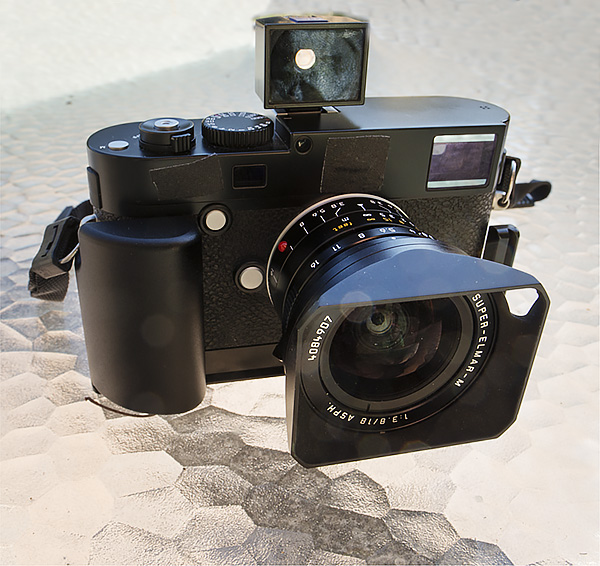Summary
At the end of a camera review, the reader usually asks, “Do you recommend buying one?” My answer is always, “It all depends.” That’s true in spades for the M240.
Let’s deal with the easy case first. If you’ve got an M8 or M9 and a lot of Leica glass, and want any or all of the following, you should think about upgrading.
- More accurate focusing with long lenses
- Less noise in dim light
- More accurate framing with all lenses
In addition, if you’re a M8 or M9 user, there are some “nice to haves” to consider, none of which is a reason to buy the M240 in and of itself.
- More solid tripod mount (comes with a downside: you have to remove a tripod plate to get at the SD card or the battery. The RRS setup, which replaces the Leica baseplate, is the way to go).
- Better battery life when not using live view
- Better rangefinder
I’m not going to get into the CCD vs CMOS morass, but I will say that the combination of the filters in the Bayer array and the chip spectral sensitivities are different in the M9 and M240, so they will render colors differently. Neither is right – you can’t buy a camera that sees color the way a human does – but they are different. Most of this you can adjust for in post, but some of it can’t be profiled out.
M240, 18mm Super-Elmar, Zeiss optical finder, RRS grip and plate, and strategically applied gaffer tape
That’s the simple case.
I figure that, if you really like rangefinder cameras and Leica glass and have deep pockets, then you’ve already bought and M8 or M9, and are in the above group. You’ve certainly had enough time to fork over your money. If you like rangefinder cameras and Leica glass and have financial constraints, I don’t think the M240 is the body that’s going to get you reaching for your Visa card. If you’re on the fence, I recommend getting a used M9 and a slow Leica lens for a total cost of entry of five or six thousand dollars and seeing if you really like the rangefinder experience before buying a M240 and $20K worth of glass. If you don’t like it, you can sell it and not take a bath.
By waiting, you’ll also get a chance to see how cameras like the upcoming Sony A7R fare with Leica lenses and with native Zeiss ones. But if you end up loving the rangefinder experience, cameras like the A7R aren’t going to cut it for you, and Leica’s the only game in town.
For me, the M240 is camera that does a few things wonderfully well, a few things acceptably so, and a few things not at all. It’s a specialty item, not a general purpose camera.
What it’s great at:
- Taking Leica lenses.
- Providing a pure, tactilely exquisite rangefinder experience.
- Providing 24 megapixels with no antialiasing filter.
- Costing a lot of money (I’m talking about the lenses; a M240 and a D4 body aren’t that far apart)
What it’s OK at:
- Acting as an EVIL (electronic viewfinder, interchangeable lens) camera
- Focusing with lenses longer than 50 mm (see above).
- Taking lenses from many manufacturers via adapters
- Being small enough to serve as a good travel camera.
- Dynamic range — the green shadow color shift keeps it from being great at this.
What it doesn’t do:
- Autofocus
- Auto aperture
- Fast operation
- Sophisticated metering
- Have lots of modes and features
The bottom line.
I hope it never happens, but if someone told me I was being shipped off to parts unknown and I had to pick one camera body, I’d cry and snivel and reach for the D4. It’s an incredibly versatile camera. Dim light, fast action, landscapes, portraits, whatever; bring it on. But I like my M240 a lot. It does things the D4 can’t do well. It’s less conspicuous, quieter, better at zone focusing (and therefore street photography). And then there are those great Leica lenses.

Leave a Reply